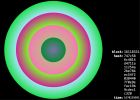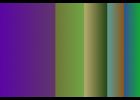Jurgen Ostarhild
Jurgen Ostarhild is self-taught photographer who was recognised as an artist by the Verband bildender Künstler, Baden-Württemberg in 1981. Since 1984, he worked internationally as a fashion photographer. Having had studios in Stuttgart, Munich and London, he settled in Paris between 1993 and 2013. Ostarhild gained commercial acclaim photographing celebrities and shooting advertising for international brands such as Levis, Adidas, L’Oréal and others. His work has appeared in I-D, Jalouse, Wad, Paper and Sunday Times, among others. In 1995, Ostarhild became one of the pioneers of Photoshop, experimentation with the essence of photography and the photographer-subject-technology relationship in the digital age. His work as an artist, represented by Galerie Jerome de Noirmont, Paris, includes his first solo show of gender morphing works “Überbabes” in 2002, which continued on to FIAC and Forum Des Halles in 2010. Ostarhild currently lives in Berlin and works as a visual artist, exploring the genesis of colour and image. His most recent exhibition, 2019, was curated by Eugen Gomringer at IKKP Institute in Rehau, Germany and presented works in letters that comprise the Hexadecimal code for colour photography.
Articles of Jurgen Ostarhild
Spotlyrics / NonDigitColors
The NonDigitColors project is based on a text by Vilém Flusser from 1991, “The Emigration of Numbers from the Alphanumeric Code.” . In this text, Flusser evokes, among other things, the fall of the alphabet: “The alphabet is about to be crushed by numbers on the one hand and images on the other hand, as by a pair of pliers.” The RGB (red-green-blue) system that determines color on most computer screens is hexidecimal: from sixteen available characters, it uses a six-character string to deliver any individual color, preceded by a pound sign (#). The project NonDigitColors uses a code of 6 letters: a, b, c, d, e, f to make up character strings. There are 46656 different permutations, or words or signs that become color values by the addition of the # sign. NonDigitColors are computer color codes that, paradoxically, do not consist of numbers. When the numbers “emigrate” from the hexadecimal code, only the “non-digital” codes remain.
The depiction as code establishes color as a linguistic construct. The project Spotlyrics refutes Flusser’s above-mentioned assertion and claims a place for letters in a modern, computerized, future-oriented world.

